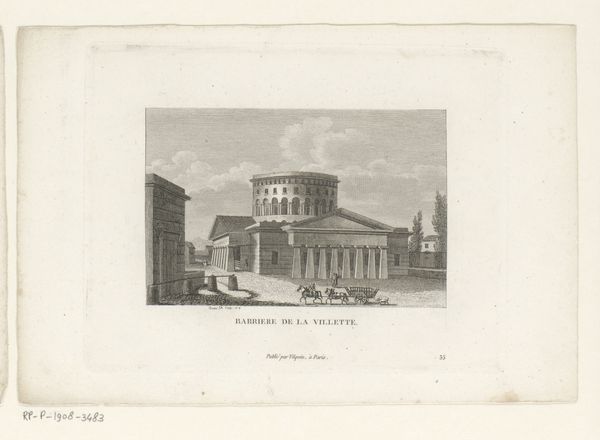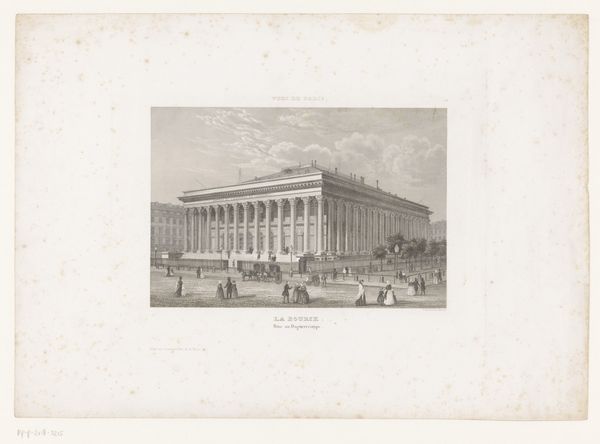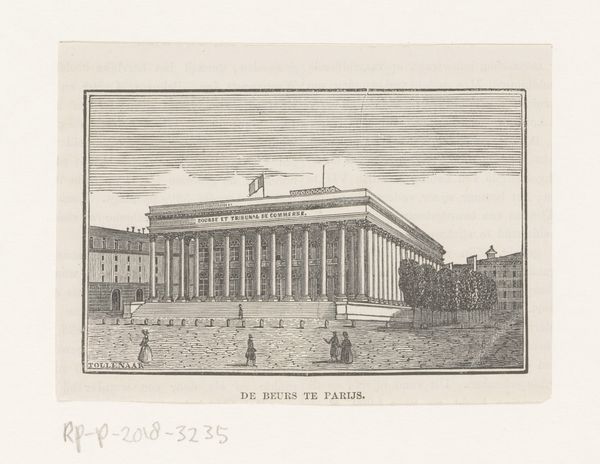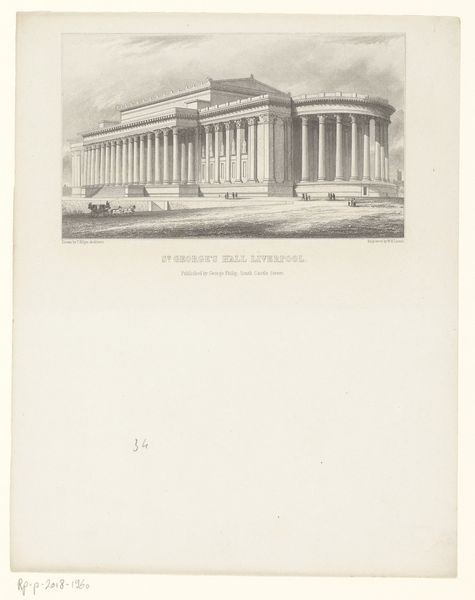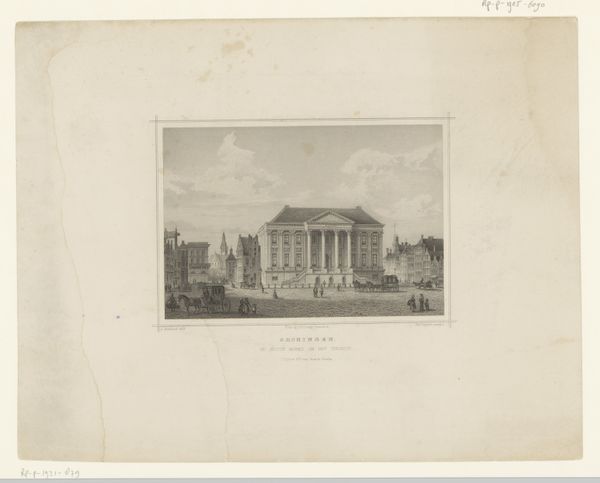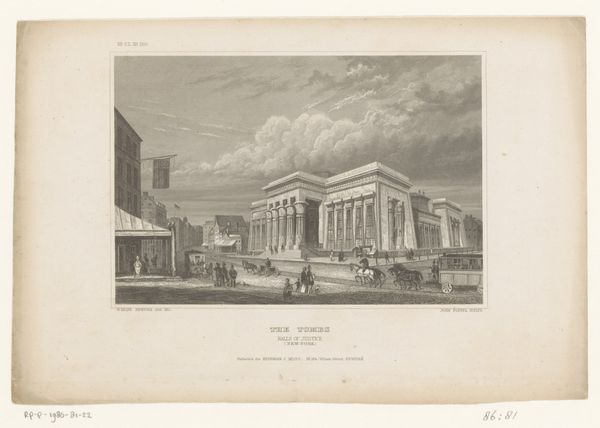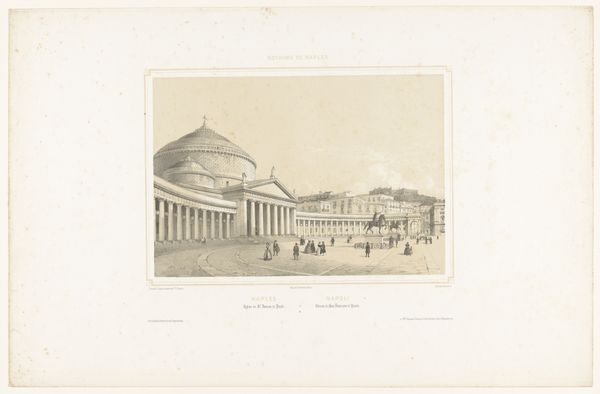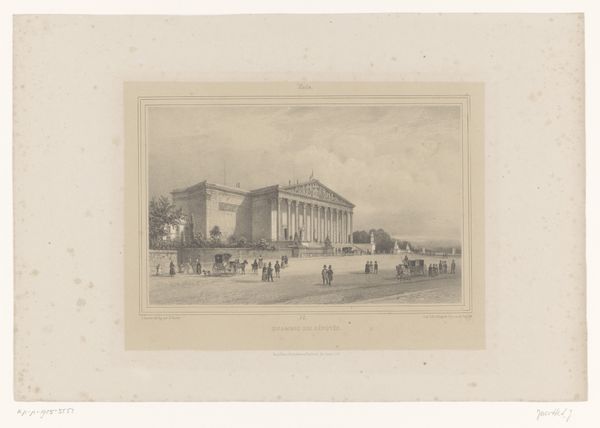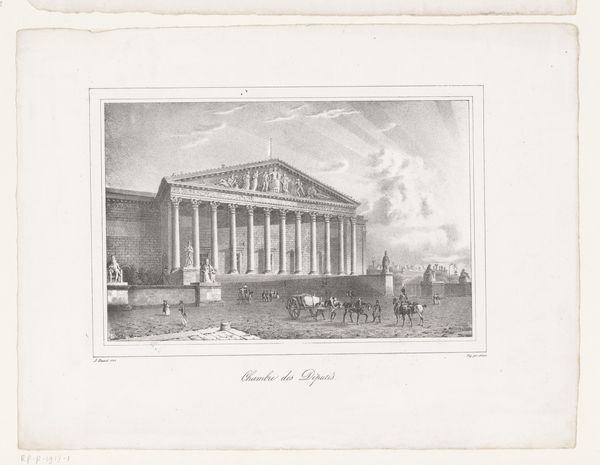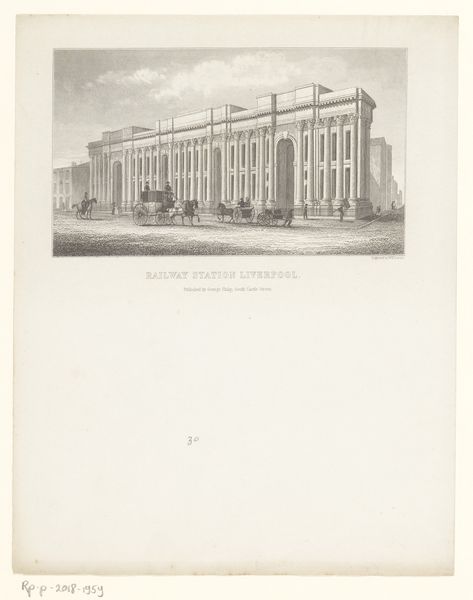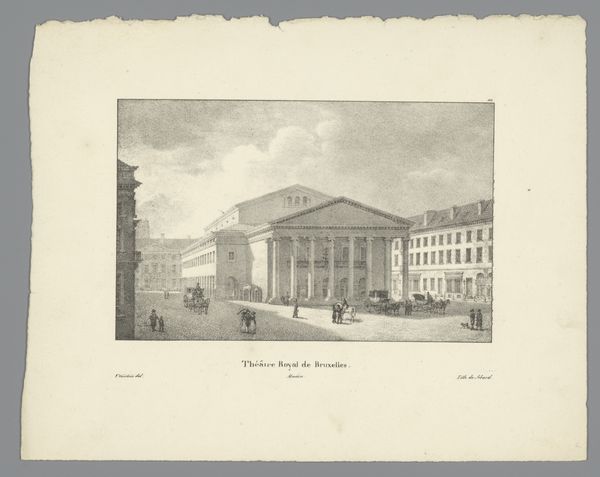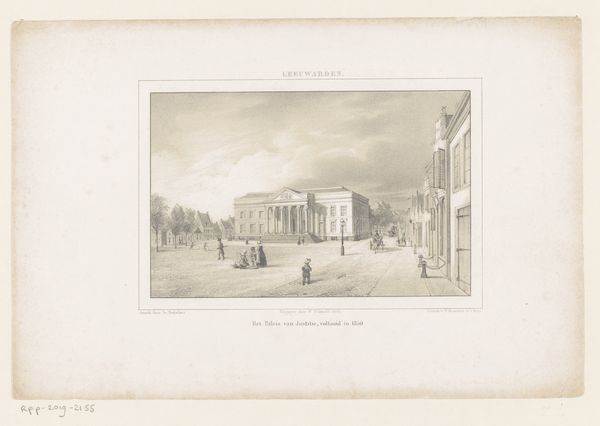
print, etching, engraving, architecture
#
neoclacissism
# print
#
etching
#
old engraving style
#
landscape
#
perspective
#
cityscape
#
history-painting
#
engraving
#
architecture
#
realism
Dimensions: height 124 mm, width 158 mm
Copyright: Rijks Museum: Open Domain
Editor: This is *Gezicht op het Palais Bourbon te Parijs*, a print made by François Louis Couché in 1818. I'm struck by how precisely rendered the architecture is – everything feels very linear and ordered. How do you interpret the composition of this piece? Curator: The emphasis is decidedly on the formal elements. Consider the balance achieved through the symmetry of the Palais Bourbon itself, mirrored by the surrounding structures. The use of perspective lines draws the viewer’s eye directly to the heart of the composition. The architecture's precise, almost clinical execution, becomes the subject. Notice how the use of light and shadow models form, and creates rhythm throughout. Editor: So, it’s less about the building’s function and more about the relationships between the forms? Curator: Precisely. Note how the architectural details – the columns, the pediment, and the very calculated placement of each element – speak to an underlying structure, a language of form. How do those formal elements relate? How do they construct meaning? Editor: I see what you mean. The human figures are minimized. Curator: Indeed. They are relegated to mere accents. Editor: Focusing on the architecture like that makes me consider the impact of lines in an entirely different way. Curator: It allows the architectural object and its design principles to speak directly to us. Considering the artist’s decisions reveals so much. Editor: Right, the organization and design is the meaning. Thanks, that makes so much sense now!
Comments
No comments
Be the first to comment and join the conversation on the ultimate creative platform.
